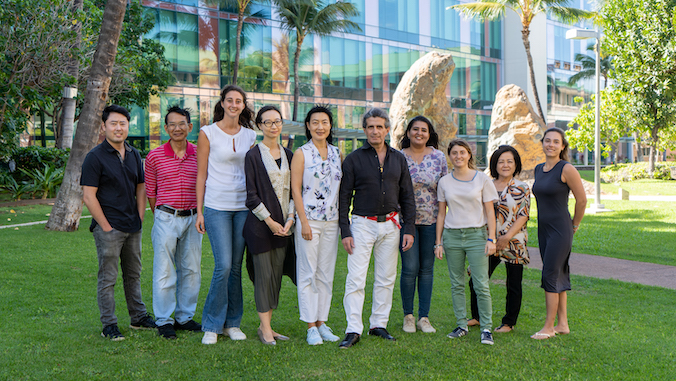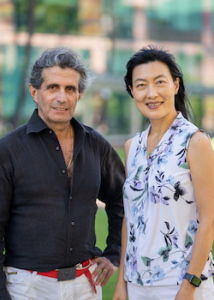
A University of Hawaiʻi Cancer Center research team led by Michele Carbone and Haining Yang may have discovered a key to increasing the survival rate of Mesothelioma, one of the deadliest cancers, that could also ultimately be used to treat other types of cancer.
Mesothelioma is a cancer of the membranes covering the lungs, chest and abdomen that is resistant to therapy and has an average survival rate of one to two years. Patients born with only one of the two copies of the BAP1 gene that are normally present in our cells, are affected by the BAP1 Cancer Syndrome and often develop mesothelioma. Surprisingly, most of them respond to therapy and have an average survival rate of seven years, and sometimes are cured.

The researchers found that both copies of the BAP1 gene are required to stabilize HIF1—the protein that allows tumor cells to grow and invade nearby tissues. As observed in patients with only one copy of the BAP1 gene—tumor cells have difficulty growing in the low concentrations of oxygen present in the tumor environment and are more easily killed by therapy. By targeting BAP1 activity, researchers hope to make mesothelioma and other cancers much more susceptible to therapy, which will increase the cancer survival rate. This study was recently published in Proceedings of the National Academy of Sciences of the U.S.
The BAP1 Cancer Syndrome, caused by inherited mutations of the BAP1 gene, was discovered by Carbone and his team at the UH Cancer Center in 2011. Since then, many affected families have been identified in the U.S., Europe, Australia, Japan and in the Middle East.
“We have been studying 92 such families from all over the world,” said Carbone. “Two clinical trials have been opened at the National Cancer Institute Clinical Center in Bethesda, Maryland to treat and study affected individuals in these families. We hope findings from this study may enable clinicians to offer their patients more targeted treatment options faster.”

